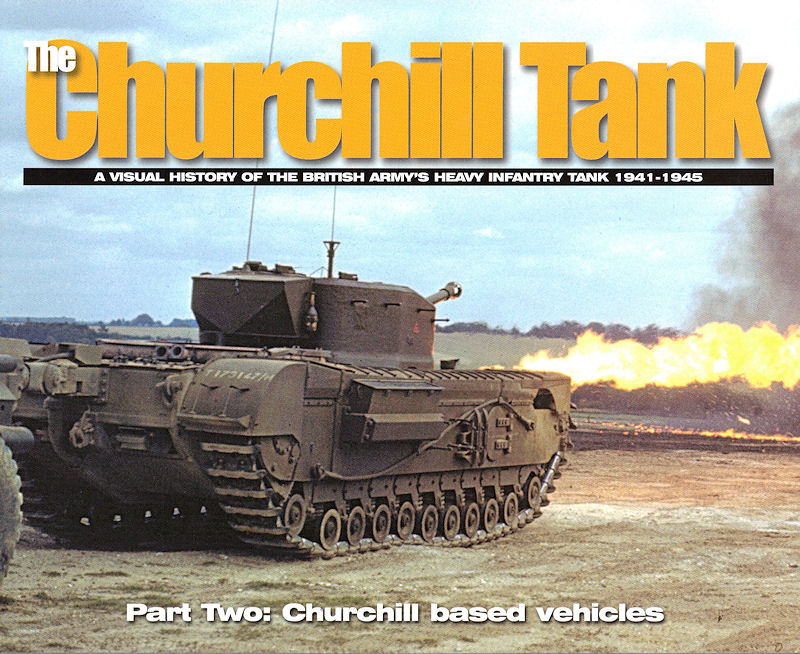The Churchill Tank: A Visual History, Part Two - Churchill Based Vehicles
This is the second volume in Ampersand Publishing’s pictorial history of the Churchill heavy infantry tank. The first volume covered the gun tanks, while this second volume covers the non-gun tanks, such as flame throwers, bridge layers, flail, and armored engineering vehicles. It is thus broken down into the following chapters:
- Churchill Black Prince, pages 4 – 12
- Churchill AVRE, pages 13 – 43
- Churchill Onion, pages 44 – 46
- Churchill Goat, pages 47 – 51
- Churchill AVRE Snake, pages 52 – 53
- Churchill Mk. 1 ATOG, pages 54 – 56
- Churchill Bullshorn, pages 57 – 59
- Churchill CIRD, pages 60 – 61
- Churchill AMRCR, pages 62 – 63
- Churchill Flail FV3902 “Toad”, pages 64 –- 71
- Churchill 3-inch Gun Carrier, pages 72 – 75
- Churchill ARV, pages 76 –- 87
- Churchill TLC, pages 88 – 94
- Churchill ARK, pages 95 – 102
- Churchill Bridgelayer, pages 103 – 106
- Churchill Okes Flamethrower, pages 107 – 110
- Churchill Crocodile, pages 111 – 120
Who knew there were so many Churchill derivatives!! At 120 pages, the book contains over 150 photos from period training exercises, combat situations, and present day military museum examples. As the subtitle suggests, it is strong on photographic coverage with relatively little actual written history of these vehicles. This said, each photograph is extremely well-captioned, often providing the reader with the exact unit the vehicle is from, the geographical location where the photograph was taken, and even the date it was taken. With one exception, all the photographs are black and white, and for the most part very well reproduced. Many are full page (11” by 8.5”), and so provide a lot of useful detail for the modeler or historian interested in any of these weird and wonderful military machines. All at a price that I feel should not cripple the wallets of most modelers.
All in all, this is a great book on a fascinating subject. I can’t recommend this book more highly to anyone interested in British military vehicles of the Second World War. Thanks to Ampersand Publishing and IPMS/USA for providing me with the opportunity to share this book with IPMS USA members.



Comments
Add new comment
This site is protected by reCAPTCHA and the Google Privacy Policy and Terms of Service apply.
Similar Reviews